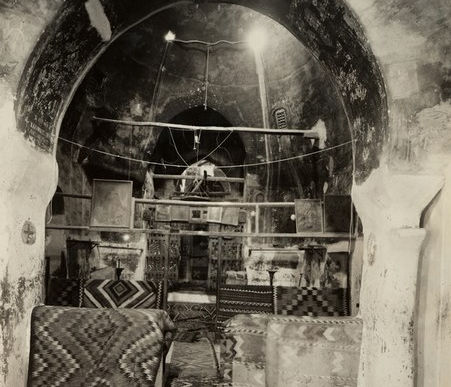St.Paul monastery

The Monastery of St. Paul probably dates to the fifth century and was founded in memory of one of Egypt's greatest saints and anchorites, who is said to have lived in a cave over which itwas built for a period of some eighty years.
It is located in the Eastern Desert, near the Red Sea mountains. It is about 155 km (96 mi) south east of Cairo.
The Monastery of St. Paul (Deir Anba Bula), which has also been called the Monastery of the Tigers (Deir al-Numur), perhaps because of its wilderness location, has always been associated with the Monastery of St. Anthony.
Like many of Egypt's earliest monasteries, this one suffered at the hands of Bedouin tribes. One during the year 1484 was particularly destructive, when many of the monks were killed and their library was put to the torch. Afterwards, the monastery was rebuilt under the patronage of Patriarch Gabriel VII, who sent ten monks from the Monastery of the Syrians (Wadi al-Natrun). Yet, during the second half of the sixteenth century, it was again attacked and ransacked twice, forcing the monks to finally leave.
The monastery apparently set deserted for the next 119 years, only to be repopulated by a group of monks from the Monastery of St. Anthony under the patronage of John XVI, who promoted an extensive reconstruction in 1701.
Most ancient, remote Egyptian monasteries are in fact fortifications for good reason. Likewise, St. Paul's Monastery has high defensive walls surrounding the monastic buildings.
The tower is perhaps one of the most obvious structures within the complex. As usual, it was entered via a drawbridge and represented the last defensive bastion against the desert raiders. Situated next to the church of St. Paul, in the past, its ground floor served as a cemetery for the monks, while the second floor was a storeroom for the food reserves which would sustain the monks through a period of long siege.


Within the monastery is an ancient refectory that is no longer in use, but which dates back to medieval times. Within, a heavy masonry table with a lectern fashioned on its west end, from which the sacred texts and the lives of the saints and martyrs were read during the community meal, dominates the room. and on the west side of the passage are two rooms that were once used as mills. Within are big stone millstones which were operated by huge wooden gears turned by draft animals.

The monastery contains many churches some of them high in the mountain
Here are some old photos of the monastery had been taken by the team of Thomas Whittemore in 1920 .








